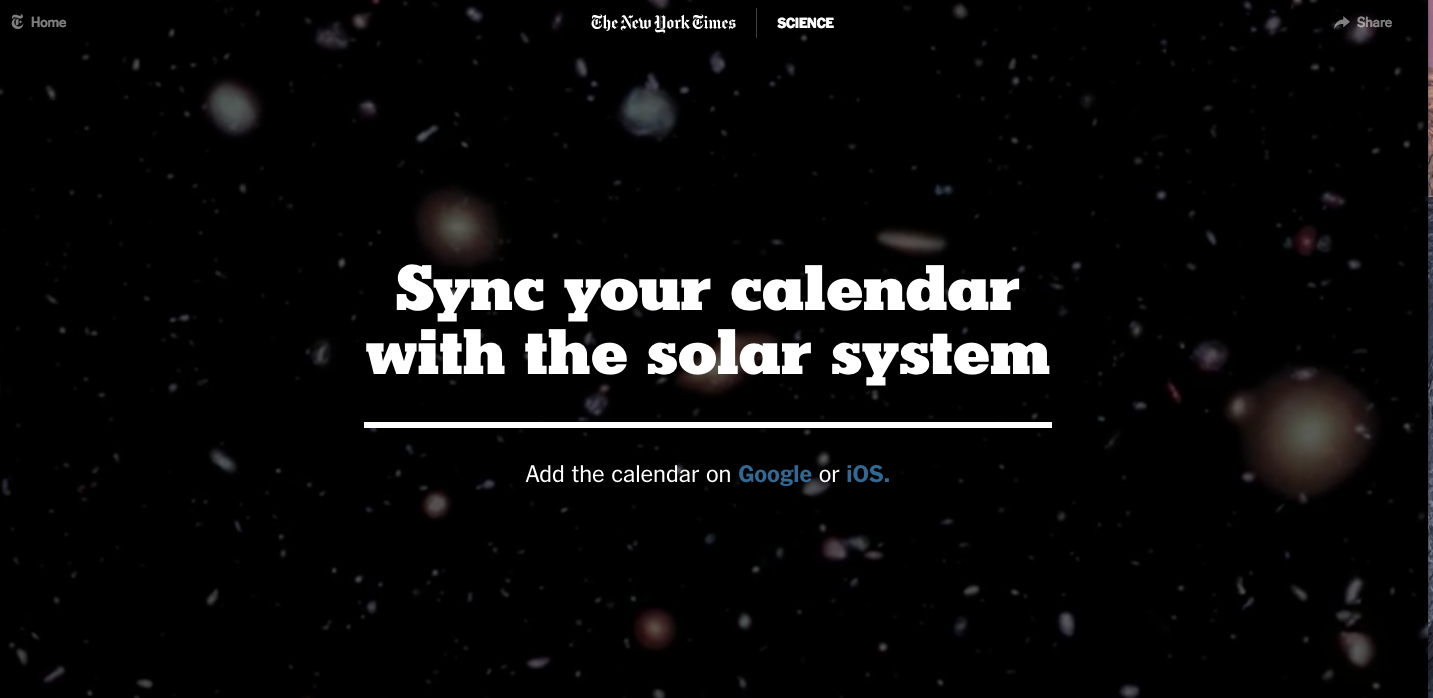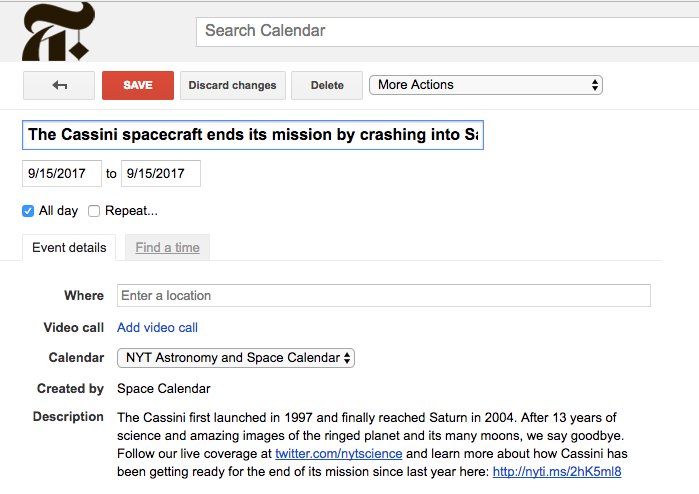Calendars have always been an essential function of newspapers. For centuries, they’ve appeared in newsprint alongside stories and columns about everything from local theater productions to political rallies.
And now The New York Times is bringing them back — just in time for this month’s solar eclipse.
On Friday, the newspaper soft-launched a new digital calendar that includes future space events such as eclipses, comets and meteor showers. The feature syncs with readers’ personal calendars and includes requisite information like dates and times, as well as links to livestreams and background stories — all with the goal of serving as a personal digital guide for astronomy.
Michael Roston, senior staff editor for science, said he was inspired to create the calendar in part by archives that show The Times has used them in print before.
“There’s this long history at The Times of creating curated calendars of information for people, but there hadn’t been a digital format for it,” Roston said. “I chose space and astronomy as the starting point because there’s some predictability around it.”
In order to get The Times’ space calendar, users can subscribe on a landing page and add it to their Google or Apple calendars. Roston said there will only be about two to four events scheduled per month, so users don’t have to worry about their personal calendars being overly cluttered.
The calendar — which is available to all Times readers, regardless of subscription status — is aimed at two kinds of audiences: those who are interested in space but doesn’t have the time to research it and fanatics.
“The opportunity to stay connected to these ongoing event will help them keep up with some important things that are happening in space and astronomy,” Roston said. “We certainly want to make it easier for our audience — whether subscribers or not — to find that journalism we have already.”
The idea for creating a tailored guide to space events comes after a few past attempts to use calendars at The Times. Roston said he first experimented with using the platform in 2014 when he was a social media editor on the newspaper’s culture desk. There was a TV marathon showing every episode of “The Simpsons” back-to-back, and he asked readers to write short essays about their favorites — which he then plugged into an interactive calendar feature.
“It seemed like such a natural product,” Roston said. “Back then, it was kind of just this novel new concept.”
Ben Koski, deputy editor of interactive news, said Times journalists had already been using calendars internally to organize and plan their coverage of events. Building out a space calendar seemed like a natural extension of that, and it presented an opportunity for the newspaper to open up another promotional channel.
“One of the goals of the calendar is to provide a way of resurfacing the evergreen content that Science has created,” he said. “What we can do with the calendar is put the meteor shows on the calendar and link to that over and over again.”
Despite the possibilities, today calendars are still a novel concept for The Times, albeit one taken more seriously. Roston said his team hasn’t done any user testing on the space calendar and that the soft launch is largely experimental.
“That’s the kind of service our readers would benefit from — using a format that a lot of people already rely on a daily basis,” Roston said. “It’ll be interesting to see how people respond to it.”
On the back end, the calendar is relatively simple. It draws primarily from Google Calendar’s API, which functions as a kind of content management system for The Times’ interactive team. Roston said they wanted to make sure the feature didn’t require an app download or a visit to the newspaper’s website before using it.
But perhaps the most interesting part of the calendar’s development is the fact that an intern built it.
“I was the one tasked with building out this thing,” said Sherman Hewitt, a summer intern with the interactive news team. “The calendar pulls information from (our) curated calendar and displays it on the landing page. The landing page is more so an introduction to the idea of the space calendar, when the real main feature is subscribing to it.”
While The Times is still very much in the beta process of creating curated calendars, Roston said he could see the feature being useful to other sections of the newspaper in the future, such as the sports desk.
“Our primary goal at this moment is to think about the best way we can serve our readers,” he said.








